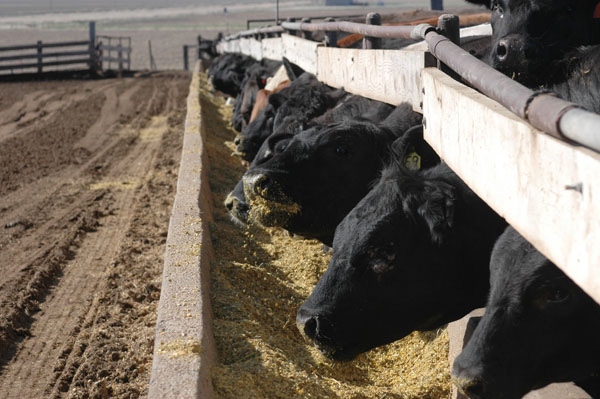Questions about VFD? Let's clear up the confusion
January 4, 2016

As we welcome 2016, we begin the countdown to year’s end and the implementation of the veterinary feed directive.
From the calls I have received, it is apparent there is some confusion in the industry about the new VFD rule, which took effect Oct. 1, 2015, and the new feed and water antibiotic labels which will be phased in during December 2016. There are some changes affecting those using a VFD drug in cattle today, but the major changes won’t take effect for us until things roll over to the new labels as of Jan. 1, 2017.
Initially, the Oct. 1, 2015, implementation of the VFD changed some details in the requirements for recordkeeping, such as who keeps the original copy of the VFD — now, it’s the veterinarian — as well as clarifying the veterinary-client-patient requirement. For a cattle producer today, unless you are feeding the only current VFD antibiotic for cattle (Pulmotil, Elanco Animal Health), there will be no effect on you.
The big change for BEEF readers will be when the new VFD drug labels go into effect, which is expected to happen in December 2016. The label change will affect antibiotics delivered to animals in feed and water that are also important in human health.
The procedure for transitioning from the old to the new labels is still being worked out, but it is clear that you will need to have a VFD from a licensed veterinarian in place for feeding VFD antibiotics after Jan. 1, 2017. These include oxytetracycline, chlortetracycline and tylosin. In contrast, monensin, which is an ionophore, will not require VFD authorization unless it is fed with a VFD drug — for example, tylosin — in which case the monensin must be authorized on the VFD for concurrent feeding with the antibiotic which requires a VFD.
There is also some irresponsible, inflammatory talk about the Food and Drug Administration waiting to make examples of people right away when we transition in 2017. There is just no reason to spread this rumor, or believe it. There will be some hiccups as we transition, but it is in nobody’s best interest to do anything but work together to get things right.

BEEF Seedstock 100 List
Looking for a new seedstock provider? Use our UPDATED Seedstock 100 listing to find the largest bull sellers in the U.S. Browse the list here.
I anticipate at least two electronic systems to help veterinarians and producers standardize VFD documents, avoid inaccuracies and minimize the time required to write and use a VFD. Everyone needs to take advantage of training opportunities this coming year. Veterinarians will be heavily involved in training in the coming year, so if your veterinarian isn’t able to answer some of the questions related to VFDs right now, be assured they will be up to speed in time for the transition.
Keep in mind that veterinarians will only be able to authorize label uses of the VFD antibiotics. One use is the inclusion rate in the ration (or milk replacer or mineral), and the reason for use. In preparation for the transition, it would be good to determine if your in-feed uses of antibiotics are consistent with the label. Currently, any use of a feed drug other than according to the label is illegal.
To learn about the new VFD rule and read answers to some commonly asked questions, go to the VFD page on the Center for Veterinary Medicine website. There are pamphlets on this site especially prepared for both producers and veterinarians. These should be a primary source of information.
Mike Apley, DVM, Ph.D., is a professor in clinical sciences at Kansas State University in Manhattan.
You might also like:
7 ranching operations who lead in stewardship, sustainability
Why we need to let Mother Nature select replacement heifers
Photo Gallery: Laugh with Rubes cow cartoons
Beta agonists wrongly blamed for fatigued cattle syndrome
About the Author(s)
You May Also Like


.png?width=300&auto=webp&quality=80&disable=upscale)
